Mauritius grapples with worst environmental crisis in a generation
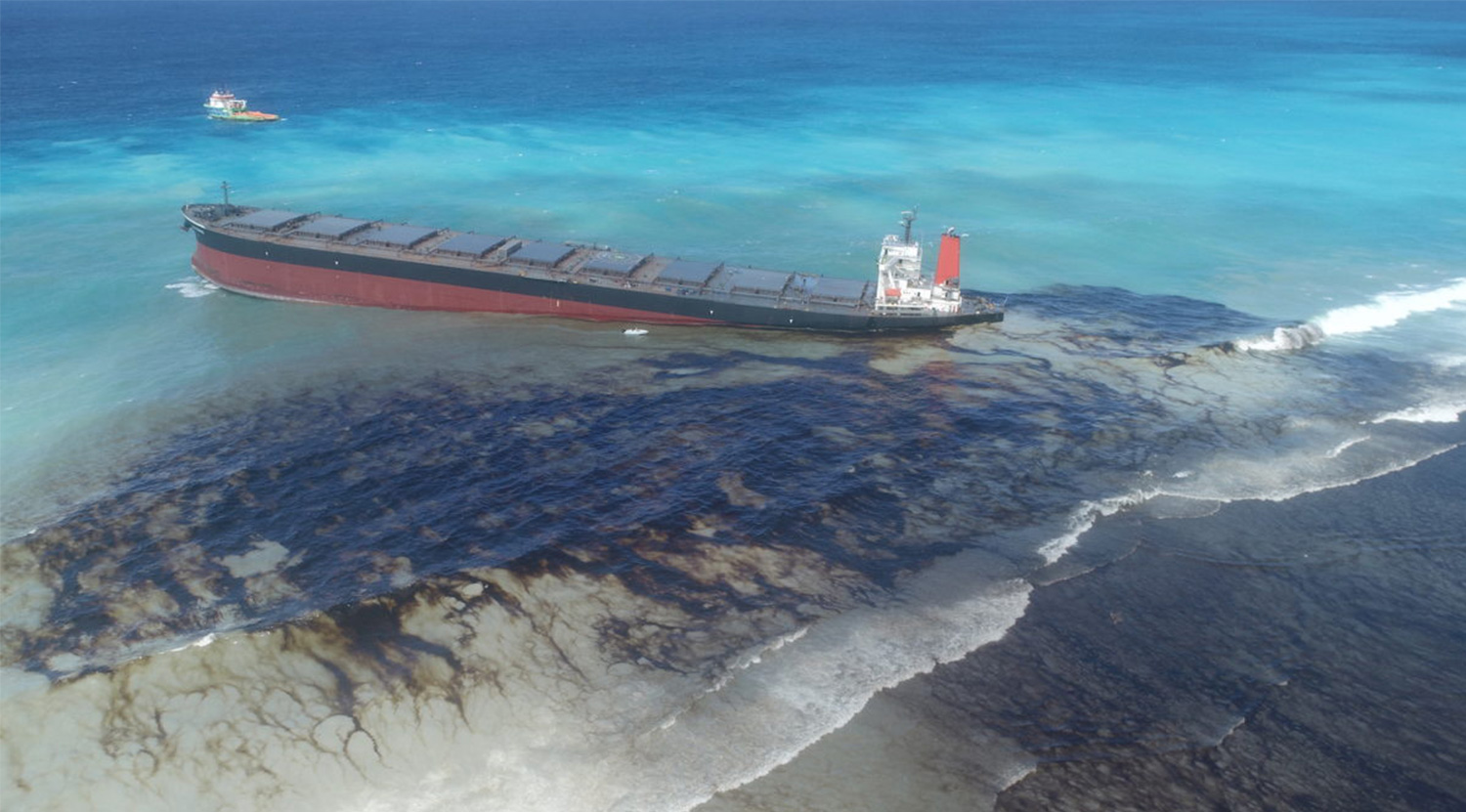
- A ship that ran aground on a coral reef has leaked about 900 tons of fuel oil into the waters off the southeastern coast of Mauritius.
- The incident occurred on July 25, and by Aug. 6 the Japanese-owned ship started to spill oil from its fuel tank, leading Mauritian authorities to declare an environmental emergency.
- The oil sludge threatens Pointe d’Esny, the largest remaining wetland in Mauritius, and other ecologically sensitive areas like the Ile aux Aigrettes Nature Reserve, Blue Bay Marine Area, and Mahebourg Fishing Reserves.
- Water currents appear to be carrying the oil slick north along the eastern shoreline, putting mangrove forests in harm’s way.
Mauritius, envied the world over for its azure waters, alluring beaches and marine riches, is facing one of its worst environmental disasters after a ship ran aground on a coral reef and leaked about 900 tons of fuel into the sea.
The island nation in the western Indian Ocean declared an environmental emergency on Aug. 7.
The Japanese-owned bulk carrier, MV Wakashio, struck the coral reef barrier off the southeastern coast on July 25. It lay stranded for more than 10 days as its condition deteriorated; on Aug. 6, a breach in its fuel tank triggered an oil spill.
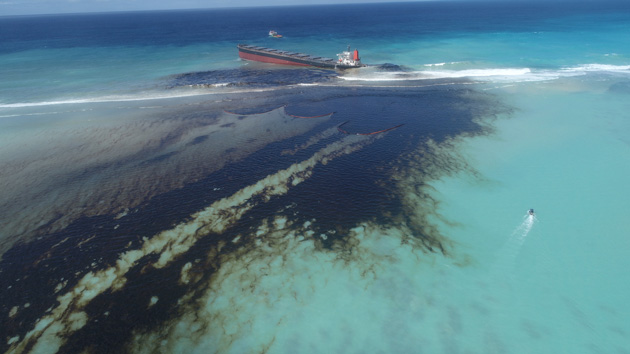
The ship, plying under a Panama flag, originated in China and was heading for Brazil. It was not carrying any cargo but did have 3,894 tons of low-sulfur fuel oil on board. That fuel oil is now sullying the waters of Mauritius.
Over the weekend, oily sludge clogged the coastline, washing up on Mauritius’s pristine beaches and threatening a host of ecologically sensitive marine areas. The ship went aground on the reefs of Pointe d’Esny, a Ramsar site and the largest remaining wetland in Mauritius. The Ile aux Aigrettes Nature Reserve, Blue Bay Marine Area and Mahebourg Fishing Reserves all lie close to the spill site.
Coral reefs rising from the seafloor are natural breakwaters that create shallow lagoons near the shore. They are hubs of marine life, providing shelter and nursery grounds for fish and other sea dwellers. The contaminated water will directly impact these reefs and the lagoons, experts said.
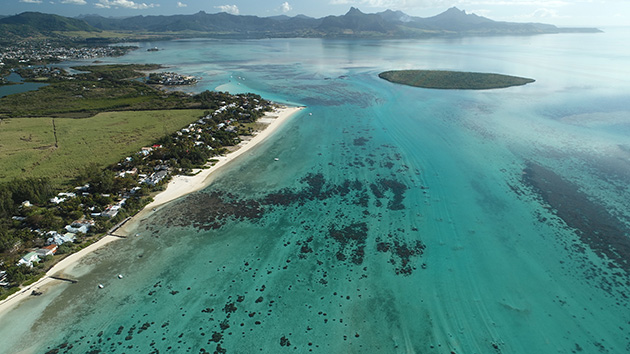
“Thousands of species around the pristine lagoons of Blue Bay, Pointe d’Esny and Mahebourg are at risk of drowning in a sea of pollution, with dire consequences for Mauritius’ economy, food security, and health,” Happy Khambule, a campaigner with Greenpeace Africa, said in a statement.
Clusters of mangroves are also found all along the eastern coast. Water currents appear to be carrying the greasy seawater north along the eastern shoreline, putting these unique ecosystems in harm’s way. Images of oily residue creeping up on the saltwater-adapted trees were already making the rounds on social media over the weekend.
The relative inaccessibility of some of these regions will make a systematic assessment of the impacts challenging. For now, the efforts of the government and civil society organizations are focused on damage control.
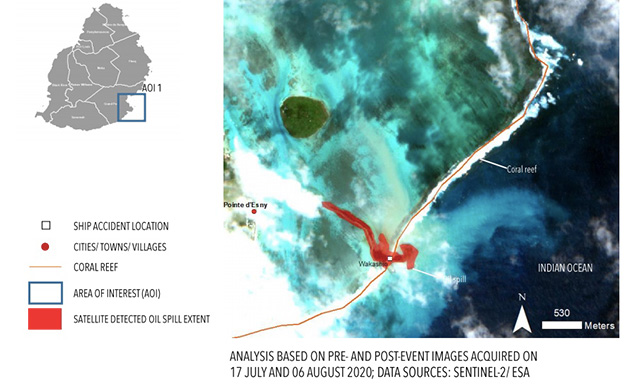
After the grounding, booms were deployed to keep the spill from spreading, but they proved largely ineffective. About 400 booms are now in place. Just over 500 tons of fuel was siphoned out of the fuel tank, according to Mauritian authorities. The spill appears to be plugged, but the difficult task of cleaning the oil from the sea remains.
The government acknowledged at the onset that it was struggling to contain the leak. “This is the first time that we are faced with a catastrophe of this kind, and we are insufficiently equipped to handle this problem,” Sudheer Maudhoo, the Mauritian fisheries and marine minister, said on Aug. 6. The prime minister, Pravind Jugnauth, called the next day for international support to tackle the crisis.
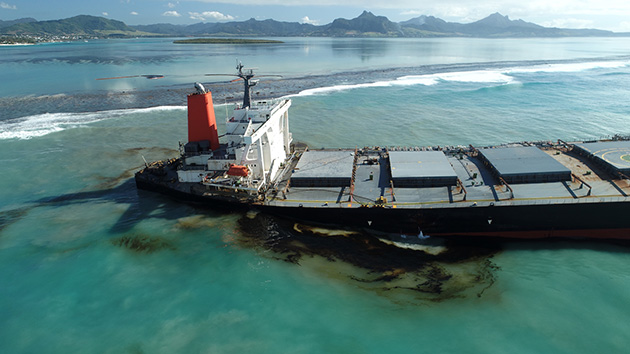
The authorities’ lack of preparedness has riled activists, who say this is not the first time a ship has run aground in Mauritian seas. “This is the third boat to run aground in five years,” Sebastian Sauvage of EcoSud Mauritius, a nonprofit, told the BBC, adding that it was incomprehensible the Mauritian government still found itself unprepared for such an eventuality.
The ocean is the backbone of the Mauritian economy and a big draw for tourists from across the world. Tourism contributed $1.6 billion to the economy last year, and the sector, along with fisheries, employs millions of people.
Mauritius is also an important port of call for ships traversing the western Indian Ocean. The stretch where the grounding happened is an “innocent passage,” a maritime designation that lets ships pass through a country’s territorial waters even if it is not docking there. For years, environmentalists have called attention to the danger posed by frequent ship traffic near ecologically fragile areas.
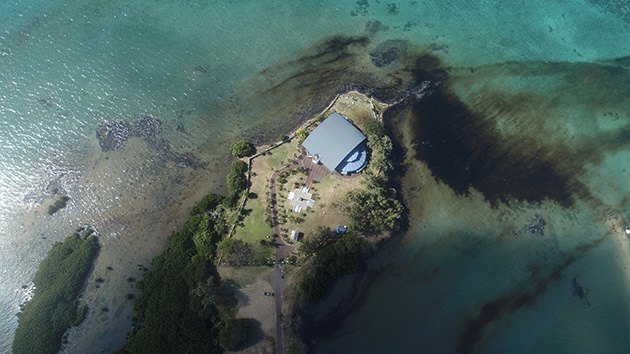
On Aug. 8, France flew in military aircraft, gear and technical advisers from its overseas department, La Réunion, about 230 kilometers (140 miles) west of Mauritius. Greece is sending equipment to pump out fuel remaining on the damaged ship. Several other countries have also offered assistance. On the ground, a slew of NGOs have mobilized volunteers to clear the sludge.
But the situation remains tenuous because of the frail state of the ship. “At this stage, we are all concerned that the ship might break into two,” said Mokshanand Sunil Dowarkasing, who works with Greenpeace Africa. “We have to ensure that 2,500 metric tons of fuel oil is emptied in the next two days.”
The ship was operated by Mitsui OSK Lines and owned by Nagashiki Shipping. “We apologize profusely and deeply for the great trouble we have caused,” Akihiko Ono, executive vice president of Mitsui OSK Lines, said at a press conference in Tokyo on Aug. 9. However, neither the operator nor the owner released estimates about potential damage.
The effects on Mauritius’s marine and coastal ecosystems are expected to be wide-reaching, but environmentalists are waiting for the dust to settle before wading in to assess the damage.
This article first appeared on Mongabay.







